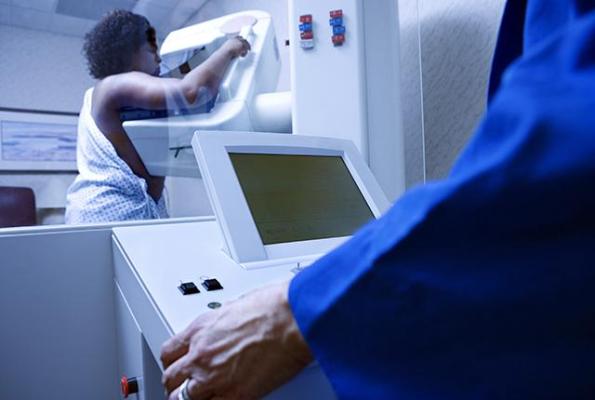
Black women tend to experience lags in getting biopsies after a mammogram shows an abnormality.
June 23, 2022 — Black and Asian women are more likely than white women to experience significant delays in getting breast biopsies after a mammogram identifies an abnormality. Moreover, those delays appear to be influenced by screening site-specific factors that may stem from structural racism, according to research published today in JAMA Oncology.
“Even after adjusting for multiple factors thought to contribute to delayed diagnosis, we still see persistent disparities among minority women, particularly Black women. To me, this suggests that other underlying factors are contributing to these differences in time to biopsy,” said Dr. Marissa Lawson, the study’s lead author. She is an acting instructor of radiology at the University of Washington School of Medicine.
The study reviewed the cases of 45,186 women whose screening mammograms had shown a tissue abnormality that called for a biopsy to ascertain whether it was cancerous. Across the study population, 34.6% of women were not biopsied within 30 days, 16% were not biopsied at 60 days, and 12% were not biopsied within 90 days.
The delays are concerning because previous studies have indicated that the benefit of screening diminishes with time, and these lags are associated with later-stage disease at time of diagnosis.
Using the time-to-biopsy of white patients as the benchmark, the researchers found that:
- At 30 days out, Asian women had a 66% higher risk of not undergoing a biopsy, Black women, 52% higher, and Hispanic women, 50% higher.
- At 90 days out, Black women had a 28% higher risk of not undergoing a biopsy. Among Asian women and Hispanic women, the risk was 21% higher and 12 % higher, respectively.
With that unadjusted model, the researchers then examined whether specific factors of individual patients, their neighborhoods and their screening facilities influenced the time to biopsy among women of different races and ethnicities.
“Controlling for individual- and neighborhood-level factors, we saw that risk was not very different from the unadjusted model,” Lawson explained. “But when we controlled for the screening facility attended, delays in time to biopsy were reduced.”
Digging deeper, the investigators examined the influence of predesignated site-level factors — academic affiliation, screening-exam modality and the availability of onsite biopsy — and were surprised to find that none of those factors explained the overt difference.
“The findings indicate that there are some differences among the screening facilities associated with the time to biopsy. We just don't know what the specific differences are,” Lawson said.
The authors wrote, “Structural racism, within and beyond healthcare, may contribute to these differences.”
The screening sites are all associated with the Breast Cancer Surveillance Consortium, a U.S. network of breast imaging registries that is representative of the country’s population in terms of age, race and ethnicity.
“Our findings highlight an opportunity for radiology departments to consider where they can commit resources to improve wait times for biopsy. This could include implementing changes in that diagnostic pathway such as using navigators to help guide patients through the process of scheduling exams and procedures,” said Dr. Christoph Lee, a UW professor of radiology and the paper’s senior author.
The research was supported by the National Cancer Institute (P01CA154292, R01CA266377, R35CA197289, U01CA199218, R50CA211115, T32CA009168, U54CA163303), the Patient-Centered Outcomes Research Institute (PCS-1504-30370), the Agency for Healthcare Research and Quality (R01 HS018366-01A1), the Lake Champlain Cancer Research Organization (021800), the Breast Cancer Surveillance Consortium, the University of Vermont, the University of California, Davis, and the Placer County Breast Cancer Foundation.
For more information: https://www.uwmedicine.org/
Related Breast Imaging Information:
Black Women Face Three-fold Increased Risk of Triple Negative Breast Cancers
Black Women Are Receiving Inferior Breast Screening
Hologic Partners with Oprah Winfrey Network to Combat Health Disparities for Black Women
Legislation May Help Identify Breast Cancer Earlier in Certain At-risk Women
Female Breast Cancer Surpasses Lung as the Most Commonly Diagnosed Cancer Worldwide
Johns Hopkins Medicine Expert Weighs Devastating Impact of COVID-19 on Healthcare Workers
Breast Imaging in the Age of Coronavirus
Female Breast Cancer Surpasses Lung as the Most Commonly Diagnosed Cancer Worldwide
Johns Hopkins Medicine Expert Weighs Devastating Impact of COVID-19 on Healthcare Workers


 July 29, 2024
July 29, 2024 








